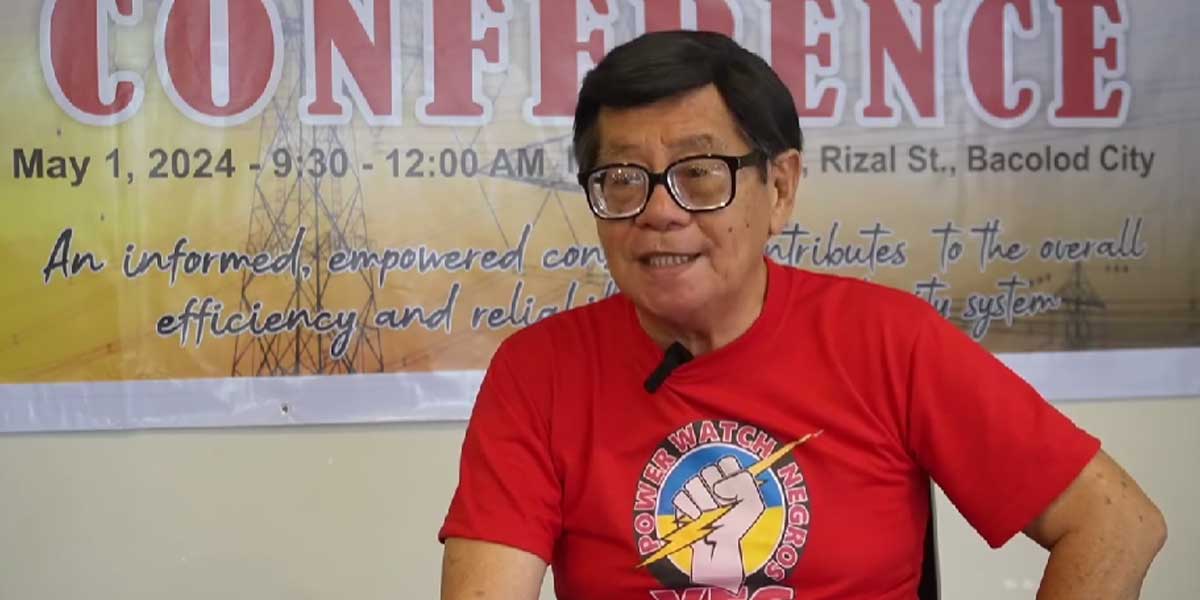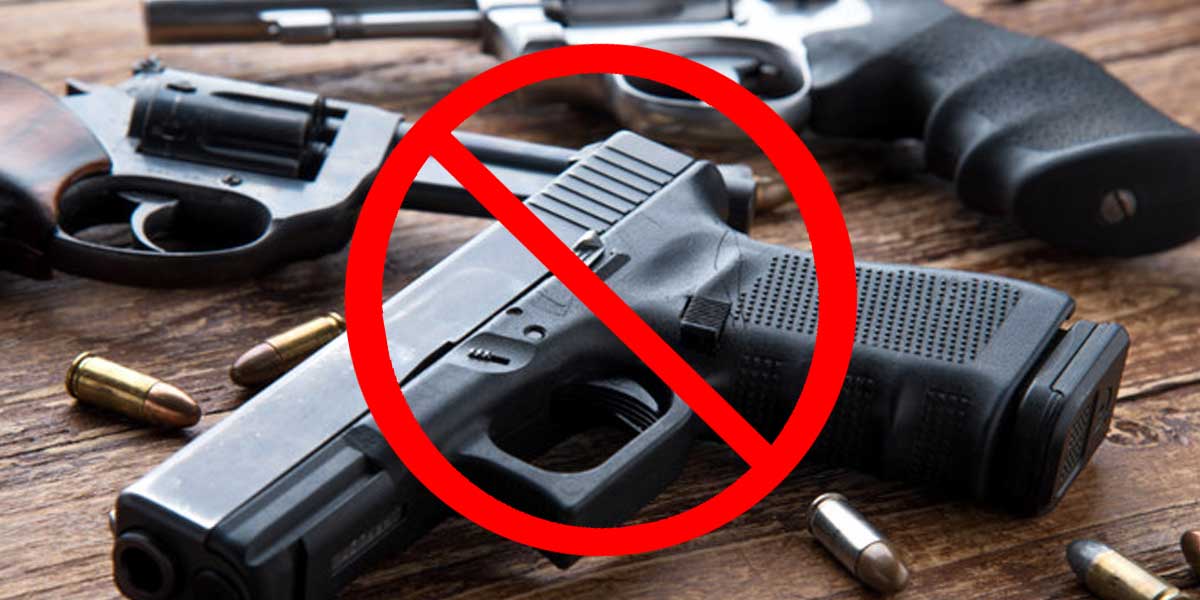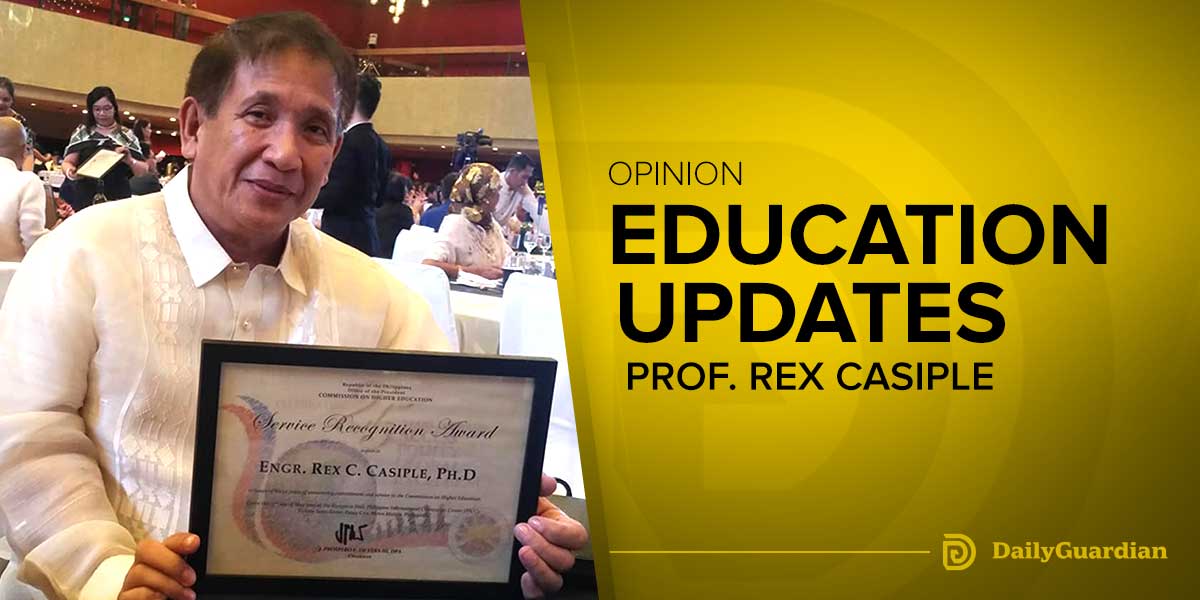By Joseph B.A. Marzan
Testing for the coronavirus disease 2019 (COVID-19) will be ramped up and more quarantine facilities will be provided in Iloilo province as part of the extension of the Enhanced Community Quarantine (ECQ) until May 15, 2020.
Iloilo Governor Arthur Defensor Jr. formally issued Executive Order (EO) No. 110 on April 30, which extends the current ECQ from May 1 to May 15.
The new EO cites the bases for the extension, which include the recommendation of the national Inter-Agency Task Force on the Management of Emerging Infectious Diseases (NIATFMEID) in its Resolution No. 29.
The provisions of the new EO are based on previous EOs Defensor had issued, as well as issuances by the NIATFMEID, the Department of Interior and Local Government (DILG), the Department of Health (DOH), and other national government agencies.
The province was placed under ECQ since March 15 via EO No. 080 and was extended from April 14 to April 30 via EO No. 102 issued on April 8.
Under the EO 110, the priority system on mandatory testing under EO No. 102 will still apply to the following:
– frontline workers in the health sector addressing COVID-19, such as, but not limited to, medical personnel, health workers, humanitarian workers, and personnel and employees in the hospitals and other health facilities;
– persons considered vulnerable to infection from COVID-19, such as the elderly, pregnant women, those suffering from diseases, conditions or underlying medical problems including cardiovascular disease, diabetes, cancer, chronic lung disease and immunosuppression, pursuant to reverse quarantine and isolation procedures;
– suspect and probable cases pursuant to the Department of Health’s (DOH) Department Memorandum No. 2020-0138; and
– residual Persons Under Monitoring (PUM) under the DOH Decision Tool for COVID-19 Assessment as of 13 March 2020 such as, but not limited to, those resulting from contact tracing.
Defensor said the prioritization system was put in place due to the capacity of the Western Visayas Medical Center (WVMC) in Iloilo City, which remains the sole testing facility in the region.
The tests will use the Reverse Transcription-Polymerase Chain Reaction (RT-PCR) testing kits that the province has procured.
RT-PCR testing is considered the gold standard in COVID-19 testing in terms of reliability compared to the rapid antibodies test.
“Under DOH issuances, the frontliners are a priority for testing but in our EO, it is a bit different because we have a different purpose under the EO. We have enlisted who we’re going to prioritize because mass testing isn’t for everybody. We should test first, including suspect and probable cases pursuant to the [DOH Department Memorandum]. The least we can do is 75 to 120 a day. For now, we have contact tracing and the WVMC is sufficient for testing. It’s not good if we overwhelm the WVMC because they might sacrifice. The PCR is not a problem, it’s the capacity, and we are currently training Medical Technologists and other personnel for testing,” Defensor said.
The governor also said that the province is procuring additional RT-PCR test kits.
“The kits we used on the [Overseas Filipino Workers] is from the allocation of kits to the province. On the other hand, we have ongoing procurement of RT-PCR test kits in preparation for the provision of this EO, going beyond the priorities,” he said.
To ramp up testing, the governor has created COVID-19 testing teams under the Provincial Health Office and the Provincial Hospital Management Office.
“The Provincial Health Office has created COVID-19 testing teams composed of a Medical Technologist and Health Care Workers. They will augment the testing capacity of the Municipal Rural Health Units when we start testing more residents. The District Hospitals will also have testing teams so that they can augment the capacity of the Rural Health Units,” he said.
The governor said there is no assurance that COVID-19 will be contained on or before May 15, thus he will implement the ECQ for the safety of the province.
“I don’t know, but we are only making sure. The EO mentions that there is no exact science, but when there is, we include it. Better safe than sorry. We are still waiting for test results because we conducted contact tracing recently,” he said.
DEDICATED FACILITIES
The new EO also mandates the towns and Passi City to provide quarantine facilities for Persons Under Monitoring (PUM) and confirmed COVID-19 cases who are asymptomatic.
“The order enjoins our municipalities and our city to establish common quarantine facilities for our PUMs and our asymptomatic patients who are COVID-19 positive. Under protocol, they’re supposed to stay at home, but there are times where the home is not a good place for quarantine, so we have to have the option to transfer them to another area where we can isolate them if possible,” he said.
The EO also provided reverse quarantine procedures for vulnerable sectors such as elderly, pregnant women and those suffering from disease/condition/underlying medical problems, including cardiovascular disease, diabetes, cancer, chronic lung disease and immunosuppression, among others.
Reverse quarantine or reverse isolation, or more commonly known as “home quarantine,” is a social distancing measure which is observed at a household level.
The governor said the measures are in place because these vulnerable sectors are at greater risk of contracting COVID-19.
“Because we want to focus on the vulnerable: elderly, pregnant women, those who are sick, and those who have conditions that can aggravate COVID-19. We should consciously isolate vulnerable persons, and that’s why we have the reverse quarantine and reverse isolation,” he said.
The following district and provincial hospitals have also been designated as dedicated hospitals for Persons Under Investigation (PUI):
– Aleosan District Hospital in Alimodian;
– Jesus M. Colmenares Memorial District Hospital in Balasan;
– Ramon Tabiana Memorial District Hospital in Cabatuan;
– Dr. Ricardo S. Provido Memorial District Hospital in Calinog;
– Ramon D. Duremdes District Hospital in Dumangas;
– Rep. Pedro Trono District Hospital in Guimbal;
– Dr. Ricardo Y. Ladrido Memorial District Hospital in Lambunao;
– Don Valerio S. Palmares Memorial District Hospital in Passi City;
– Sara District Hospital in Sara ;
– Federico Roman Tirador Memorial District Hospital in Janiuay;
– Gov. Niel D. Tupas, Sr. District Hospital in Barotac Viejo;
– San Joaquin Mother and Child Hospital in San Joaquin; and
– Iloilo Provincial Hospital in Pototan.
PUIs and PUMs are old classifications under the old COVID-19 reporting system of the Department of Health (DOH).
PUIs are persons with symptoms who had contact with confirmed COVID-19 patients and/or travel history to places with confirmed COVID-19 cases.
PUMs are asymptomatic but had contact with COVID-19 patients and/or travel history to places with confirmed COVID-19 cases.
These classifications had already been revised under the new reporting system by the DOH.
PUIs are now divided into suspected and probable cases.
Suspect cases are those showing symptoms with travel history or residing in places with confirmed COVID-19 cases or local transmission and/or are vulnerable to the disease.
Probable cases, on the other hand, are suspect cases who have already been tested and are awaiting results or have inconclusive results.
The PUM classification has been completely removed under the new system.
These classifications are still, however, being used by local government units as they have not been barred from collecting and producing the data.
CONTINUED BORDER RESTRICTIONS
Defensor said border restrictions in the province will remain in place with the same exceptions.
He said stranded Boracay workers who are residents of the province are not included in the exception, but he might reconsider the matter.
“Right now, they are not under the exceptions because these exceptions under the ECQ remain the same. They can be considered very seriously because we are under ECQ but our surrounding areas aren’t, which means the risk is different. It should be done accurately and correctly so that we do not compromise the quarantine, because this quarantine is not confined to [the province] alone but the whole country as well,” he said.
Defensor clarified his stance, saying that as much as he wanted residents to move more freely, quarantine requires lesser movement to stop the spread of COVID-19.
“The basic requisite for quarantine is that you do not move around. We are not in the business of moving people around, but of stopping moving people around. We stop them from moving so that COVID-19 doesn’t spread. If we start moving people around the country, then we will compromise the nationwide quarantine. Given that Manila is the epicenter of the country and we start to decongest Manila by moving people to other provinces in the middle of quarantine, and the people you sent turn out to be positive. It’s different if your province is not under quarantine, and it’s different if it is under quarantine, so you have to weigh your options in the interest of the country, that is why we should be careful in moving people around. We understand that there are people who are stranded but there are bigger interests here,” he said.
He also clarified that persons working in Iloilo City can still travel there, and residents of the province who were stuck in the city can likewise return.
“There are still many people near Iloilo City who work there. For those vehicles that are used as shuttles by the municipalities, although they are public transport, we have social distancing measures for this. Residents of the province who are in Iloilo City can go home anytime,” he said.
DOH data indicated that as of April 30, Iloilo province had 20 COVID-19 cases, with seven active cases, nine recoveries, and four fatalities.





















